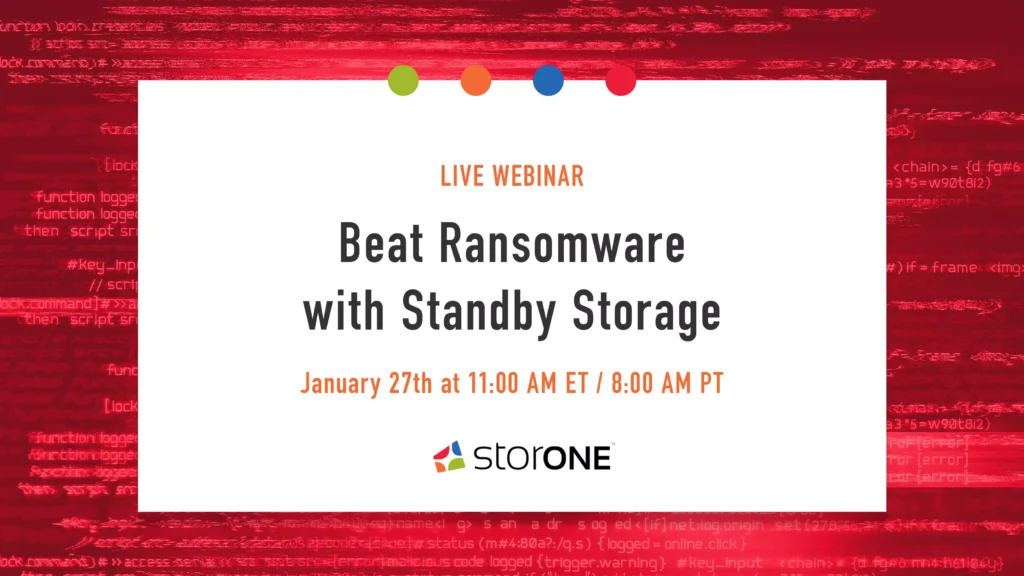Standby storage solves the response time vs. return to operations problem many organizations face during a severe outage. Most production storage systems will have 24x7x4 support contracts associated with them. The problem is that these contracts only guarantee a response time, not “return to operations” time. In other words, the vendor is there quickly to admire your problem but makes no assurances about fixing the problem.
Organizations need to focus on return to operations and account for a potential outage in the storage infrastructure. In most cases, IT needs to recover data because of user error and the backup infrastructure is there for those circumstances. This infrastructure is also there for major disasters, which wipe out the entire data center. Where backup infrastructure historically falls short is the “in-between” disasters where a storage hardware failure or a bug in the storage software causes an outage. “In-between” disasters often cause some of the worst return to operations results the organization will face. While less frequent than user errors, they are far more frequent than a site-wide disaster, yet most organizations don’t have a strategy for protecting and recovering from “in-between” disasters.
A Real Response Time vs. Return to Operations Story
I recently spoke with an IT director who relayed a situation they went through about three months prior. They were upgrading their all-flash array, and following the best practice, they upgraded the system one controller at a time. Even though the vendor assured the customer that the upgrade was non-disruptive and they could do it anytime they wanted, the IT Director decided to do the upgrade during the weekend. This organization was part of a large hospital district. Even their slow time was mission-critical.
They deployed the software on one controller, confirmed it was working, and then deployed it on the next controller. About 10 minutes after the upgrade was complete, the system began to experience load. Both controllers crashed, and they were completely down. Most of the production environment ran on this system, so the impact was severe.

The organization called the vendor’s support line, and within four hours, a technician was on-site. As is typical today, the technician was not an employee of the storage vendor and didn’t even visually recognize the system they were there to fix. Their first action was to call for support. Working with remote support took the storage vendor another 18 hours to resolve the situation so that the organization could bring applications back online. During the 24 hours, they could not onboard or discharge patients. They couldn’t even fill prescriptions. The outage made local news coverage. It is important to note that the vendor fulfilled the obligation of their support contract, but the customer was still down for well over 24 hours.
When looking to make sure they don’t get caught in a similar situation in the future, the organization began researching purchasing two of the same all-flash array and replicating between them. Dual systems were beyond what the organization could afford and didn’t protect them from their other, potentially more significant concern, a ransomware attack.
Standby Storage as an Answer to Response Time vs. Return to Operations
StorONE’s S1:Backup is the only backup storage solution on the market that can fulfill the critical role of standby storage. Standby storage means it can “stand-in” for production storage when it is down due to a hardware or software fault, or if and when a ransomware attack compromises it. A standby storage solution needs to deliver production-class performance and data availability at backup storage prices.
Standby Storage has several advantages over buying two production storage systems from the same vendor:
• Significantly less expensive than buying duplicate systems
• ONE “stand-in” for all production systems (VMware, databases, NAS, etc.)
• Different Controllers – won’t be impacted by a faulty software upgrade by the production storage vendor
• Resolves the issues relating to backup – faster, frequent protection, faster recoveries, and complete ransomware protection
The Advantages of Standby Storage
StorONE’s S1:Backup’s standby storage capability provides several advantages over the other alternative, buying two of every production storage system. First, while providing similar performance and availability, it is significantly less expensive than your typical production storage systems.
Second, the data center probably has multiple storage systems; one for virtualized environments, one for NAS, and one for databases. Most organizations have at least six different production storage systems from six vendors. Instead of buying six duplicate systems, S1:Backup’s standby feature can act as a stand-in for all your production workloads. It also is different software, which means a faulty controller software upgrade does not impact the StorONE virtual controller technology.
Third, while addressing the need for a standby storage solution, S1:Backup’s core mission is improving your backup infrastructure. S1:Backup can reduce recovery point objectives (RPO) and recovery time objectives (RTO) without replacing your backup-server software while also providing 100% protection from a ransomware attack.
And finally, S1:Backup is backup with a future. Unlike every other backup storage solution on the market, it can expand to support other use cases like archive, virtualized workloads, databases, and even analytics workloads. Using the same StorONE software and hardware controllers, it can support these additional workloads.
Join us for our live webinar, “Beat Ransomware With Standby Storage,” this Thursday at 11:00 AM ET / 8:00 AM PT to learn more about standby storage and ransomware protection. All attendees will receive an advanced copy of our latest whitepaper, “What is Standby Storage?”





